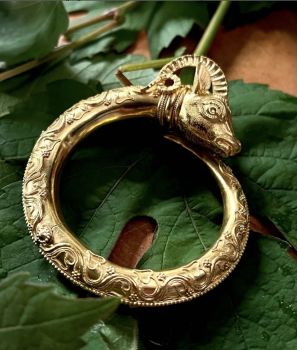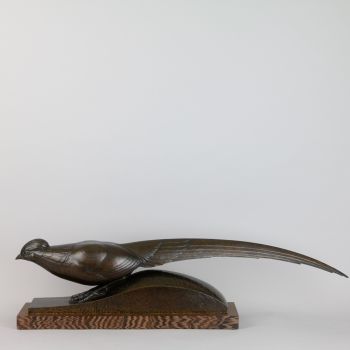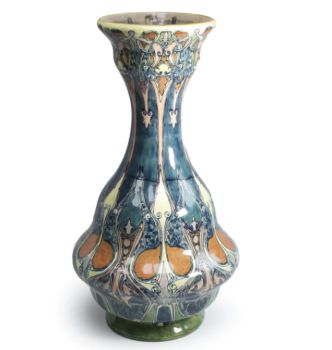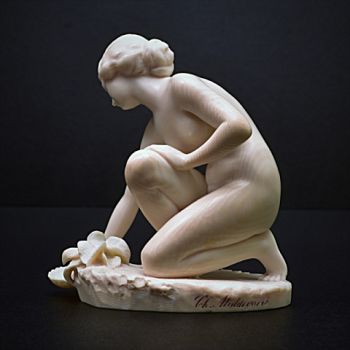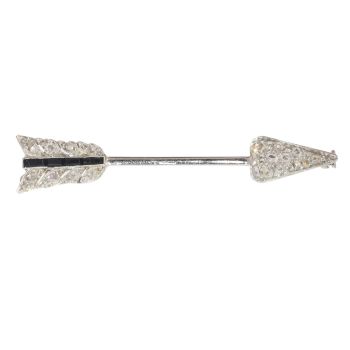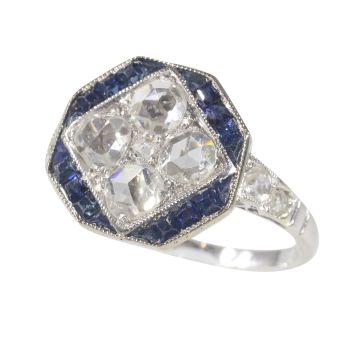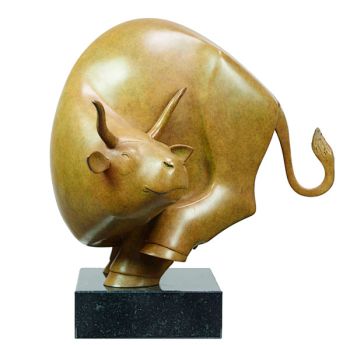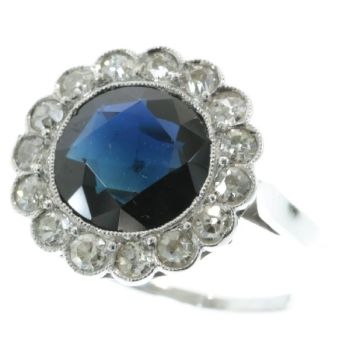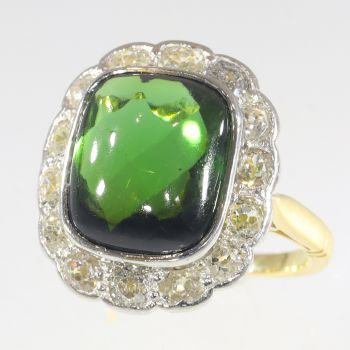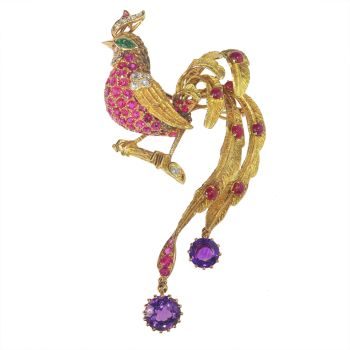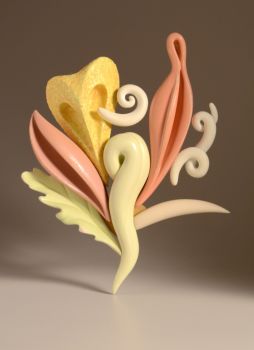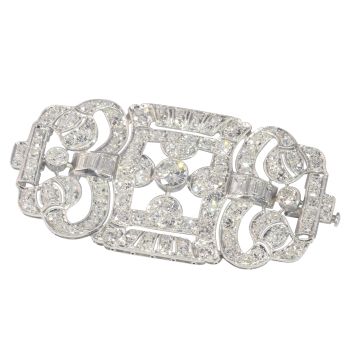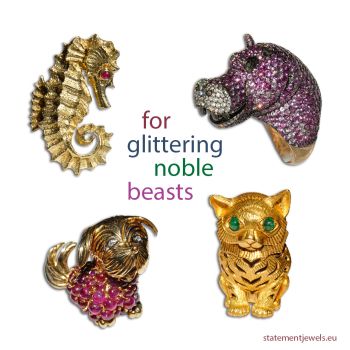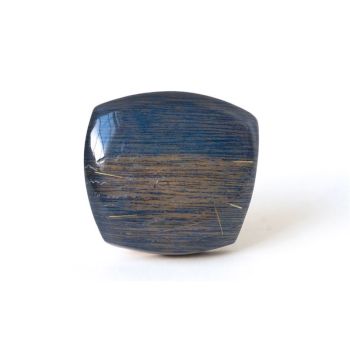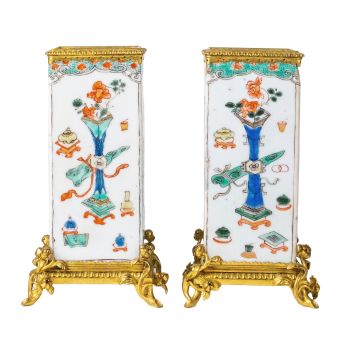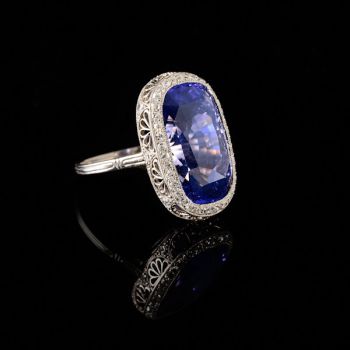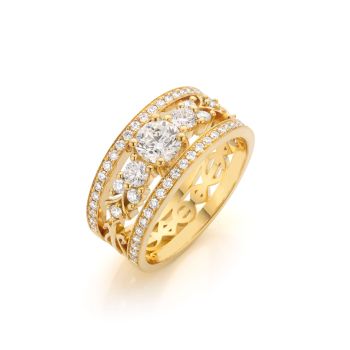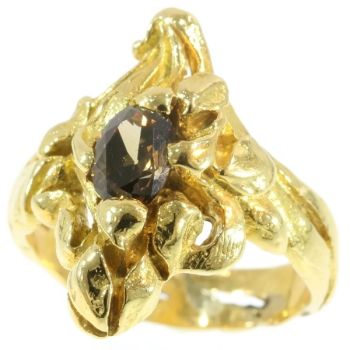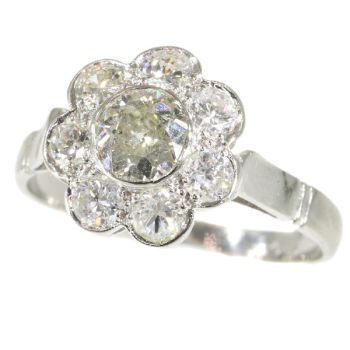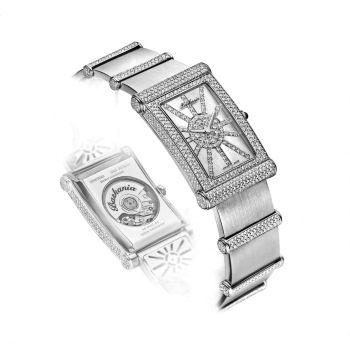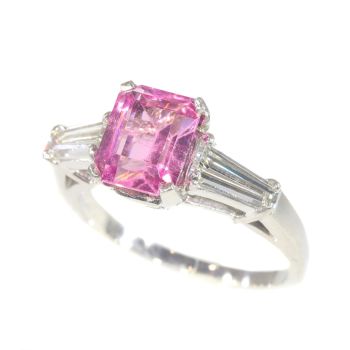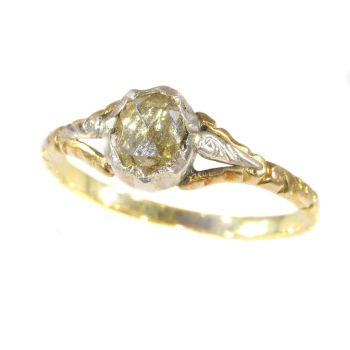Broche tutti frutti em estilo art déco francês com safira esmeralda e diamante 1920
Artista Desconocido
DiamanteEsmeraldaZafiroPiedra preciosa
€ 14.000
Adin Fine Antique Jewellery
- Sobre la obra de arte
Antique jewelry object group: brooch
Condition: very good condition
- (more info on our condition scale)
Country of origin:France
Style: Art Deco - Art Deco is an eclectic artistic and design style which had its origins in Paris in the first decades of the 20th century. The style originated in the 1920s and continued to be employed until after World War II. The term "art deco" first sawwide use after an exhibition in 1966, referring to the 1925 Exposition Internationale des Arts Décoratifs et Industriels Modernes that was the culmination of high-end style modern in Paris. Led by the best designers in the decorative arts such asfashion, and interior design, Art Deco affected all areas of design throughout the 1920s and 1930s, including architecture and industrial design, as well as the visual arts such as painting, the graphic arts and film. At the time, this style was seen aselegant, glamorous, functional and modern.
- See also: Art Decoor more info on styles
Style specifics: Abstract motives and geometrical forms are quite typical for the Art Deco period. Art Deco moved away from the soft pastels and organic forms of its style predecessor, Art Nouveau, and embraced influences from many different styles and movements of the early 20th century, including Neoclassical, Constructivism, Cubism, Modernism, and Futurism. Its popularity peaked in Europe during the Roaring Twenties and continued strongly in the United States through the 1930s. Although many design movements havepolitical or philosophical roots or intentions, Art Deco was purely decorative.
Period: ca. 1920
- (events & facts of this era, poetry of this era, fashion of this era)
Source of inspiration: Mother Nature
Material: The brooch is in platinum and the pin in 18K white gold (as normal in that era and hallmarked as such)
- (more info on precious metals)
Extra information: Tutti Frutti - Jewelry like this, set with brightly colored gemstones polished as leaves are called "Tutti Frutti jewelry". The first Tutti Frutti piece was a necklace commissioned by Queen Alexandra and designed by Pierre Cartier in 1901. Tutti Fruttijewel designs are considered to be a perfect mix of East and West because they are made up of brightly colored gemstones (like sapphires, rubies and emeralds) carved using Indian techniques and set in French platinum and diamond mountings.The stylebecame extremely popular during the 1920's, but it wasn't named 'Tutti Frutti' until 1970.
Diamonds:42 old brilliant cut diamonds with a total estimated weight of approx. 2.94 crt. (approximate color and clarity G/J, vs/si)and ten smaller old brilliant cut diamonds with a total estimated weight of approx. 0.15 crt.
Note: All diamond weights, color grades and clarity are approximate since the stones were not removed from their mounts to preserve the integrity of the setting.
Total diamond weight: approx. 3.09 crt.
Precious stones: Four sapphires andthree emeralds, all polished and engraved as leaves.
- (more info on precious stones)
Birthstones: Diamond is the birthstone (or month stone) for April, sapphire for September and emerald for May.
- (more info on birthstones)
Makers mark: The makers hallmark is eligible although we think we recognize the letter C as part of this hallmark.
Hallmarks: The French control marks representing an eagle’s head (that was in use in France from about 1838) next to the dog's head which is the official French hallmark for jewelry containing or made of platinum and that has been used since 1912..
- (more info on hallmarks)
Dimensions: 2,88 cm (1,13 inch) x 2,78 cm (1,09 inch)
Weight: 9,30 gram (5,98 dwt)
Reference Nº: 16123-0060
Copyright photography: Adin, fine antique jewelry
- Sobre el artista
Puede suceder que un artista o creador sea desconocido.
Algunas obras no deben determinarse por quién está hecho o por (un grupo de) artesanos. Algunos ejemplos son estatuas de la Antigüedad, muebles, espejos o firmas que no son claras o legibles, pero también algunas obras no están firmadas en absoluto.
También puedes encontrar la siguiente descripción:
•"Atribuido a …." En su opinión, probablemente una obra del artista, al menos en parte.
•“Estudio de….” o “Taller de” En su opinión, una obra ejecutada en el estudio o taller del artista, posiblemente bajo su supervisión
•“Círculo de…” En su opinión, una obra del período del artista que muestra su influencia, estrechamente asociado con el artista pero no necesariamente su alumno.
•"Estilo de …." o “Seguidor de…”. En su opinión, una obra ejecutada al estilo del artista pero no necesariamente por un alumno; puede ser contemporáneo o casi contemporáneo
•"Manera de …." En su opinión una obra al estilo del artista pero de fecha posterior
•"Después …." En su opinión, una copia (de cualquier fecha) de una obra del artista
•“Firmado…”, “Fechado…” o “Inscrito” En su opinión, la obra ha sido firmada/fechada/inscrita por el artista. La adición de un signo de interrogación indica un elemento de duda.
•“Con firma…”, “Con fecha…”, “Con inscripción…” o “Lleva firma/fecha/inscripción” en su opinión la firma/fecha/inscripción ha sido añadida por alguien que no es el artista
¿Está interesado en comprar esta obra de arte?
Artwork details
Related artworks
Artista Desconocido
Two Centaurs, France or Italylate 18th
Precio a consultarRobert Schreuder Antiquair
Artista Desconocido
Pulseira de diamante do século 18 com entalhes de 2.000 anos1790
€ 23.000Adin Fine Antique Jewellery
 curada por
curada porDanny Bree
1 - 4 / 12- 1 - 4 / 24
- 1 - 4 / 24
Artista Desconocido
Una rara filigrana una copa de retortoli1550 - 1600
Precio a consultarPeter Korf de Gidts - Antiquairs
Artista Desconocido
Cáliz veneciano alado1624 - 1626
Precio a consultarPeter Korf de Gidts - Antiquairs
1 - 4 / 24Artista Desconocido
Anillo eduardiano con zafiro que cambia de color1910 - 1920
Precio a consultarAns Hemke-Kuilboer Juwelier & Antiquair
1 - 4 / 24- 1 - 4 / 12













